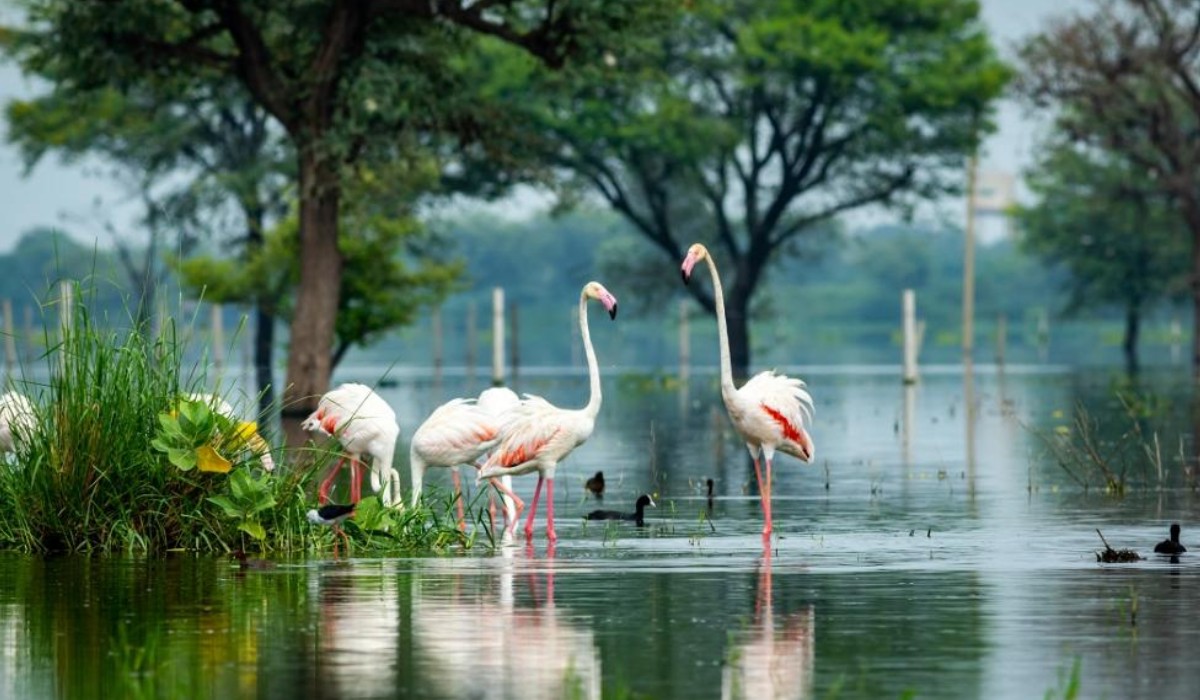Ramsar sites, designated under the Ramsar Convention, stand as beacons of environmental importance, playing a pivotal role in global biodiversity conservation and sustainable development. Established in 1971 in the Iranian city of Ramsar, the convention aims to recognize and protect wetlands of international importance, fostering their wise use for the benefit of present and future generations.
The Significance of Ramsar Sites:
- Biodiversity Hotspots:
Ramsar sites are often biodiversity hotspots, providing critical habitats for a diverse array of plant and animal species. These wetlands serve as breeding grounds, nesting sites, and stopover points for migratory birds, contributing to the overall health of global ecosystems. - Water Purification:
Wetlands act as nature’s water purifiers. They filter and purify water by trapping pollutants and sediments, ensuring the provision of clean and safe water for both wildlife and human communities downstream. - Climate Regulation:
Ramsar sites play a crucial role in climate regulation. They act as carbon sinks, sequestering carbon dioxide and helping mitigate climate change. Additionally, wetlands contribute to local climate regulation by influencing temperature and precipitation patterns. - Socio-Economic Importance:
Many communities depend on Ramsar sites for their livelihoods. These wetlands support fisheries, agriculture, and tourism, contributing significantly to the socio-economic well-being of local populations.
Challenges and Conservation Efforts:
- Habitat Degradation:
Ramsar sites face numerous threats, including habitat degradation, pollution, and overexploitation. Human activities such as agriculture, urbanization, and industrialization often encroach upon these vital ecosystems. - Climate Change Impact:
Climate change poses a significant threat to Ramsar sites, affecting water levels, temperature, and precipitation patterns. Rising sea levels and extreme weather events can lead to the loss of these delicate ecosystems. - International Cooperation:
The Ramsar Convention fosters international cooperation to address these challenges. Contracting parties commit to implementing measures that ensure the conservation and sustainable use of Ramsar sites. Collaboration at the global level is crucial to achieving these goals.
Success Stories:
- Chilika Lake, India:
Chilika Lake, Asia’s largest brackish water lagoon, is a Ramsar site that has witnessed successful conservation efforts. The introduction of sustainable fishing practices and community involvement has helped in preserving the biodiversity of this critical wetland. - Everglades, USA:
The Everglades, designated as a Ramsar site, showcases the impact of restoration initiatives. Efforts to restore natural water flow and control invasive species have contributed to the rejuvenation of this iconic wetland in Florida.
Ramsar sites represent a global commitment to the conservation of wetlands and the sustainable use of their resources. As the world faces environmental challenges, recognizing the importance of these ecosystems becomes paramount. Through international collaboration, responsible governance, and community engagement, we can ensure that Ramsar sites continue to thrive, providing invaluable services to both nature and humanity. It is our collective responsibility to safeguard these sanctuaries for the well-being of our planet and future generations.











